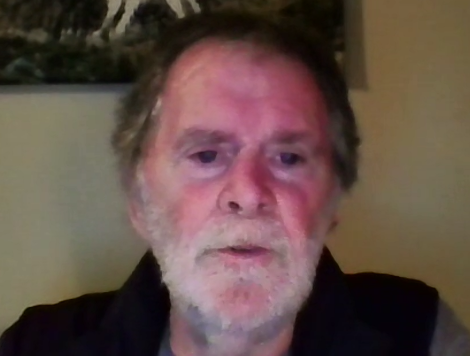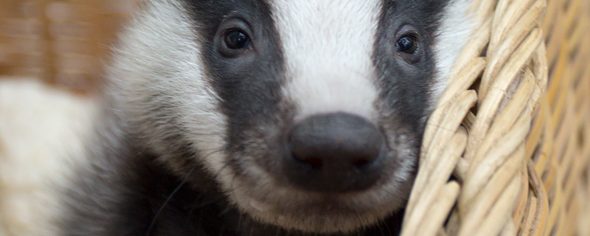Tribunal sits to reconsider Information Commissioner’s decision.
Badger Cull Data Tribunal Hearing on 01 November 2022. EA/2022/0007
 This week, Dr Brian Jones appealed to the first-tier tribunal of the General Regulatory Chamber (Information Rights) in an online hearing coordinated by the GRC Team in Leicester. It concerned a ruling by the Information Commissioner upholding the decision by the Animal Plant and Health Authority (APHA), not to supply the data to him on herd breakdown figures for culled and unculled areas in the High Risk Area. It had been decided that to supply the information would have been an unreasonable burden and contrary to the public interest.
This week, Dr Brian Jones appealed to the first-tier tribunal of the General Regulatory Chamber (Information Rights) in an online hearing coordinated by the GRC Team in Leicester. It concerned a ruling by the Information Commissioner upholding the decision by the Animal Plant and Health Authority (APHA), not to supply the data to him on herd breakdown figures for culled and unculled areas in the High Risk Area. It had been decided that to supply the information would have been an unreasonable burden and contrary to the public interest.
Presiding over the tribunal was Judge Hazel Oliver with Messrs Taylor and Sivers making up the panel. Charles Streeten represented APHA with Dr Jessica Parry attending for APHA while Dr Jones represented himself with nature conservation consultant Tom Langton as expert witness.
Dr Jones was Senior Hospital Immunologist and Head of the Clinical Immunology Unit at Queen Mary Hospital, Hong Kong and Honorary Associate Professor of Immunology in the Medical Faculty at Hong Kong University, until his retirement in 2007. He has published over 100 peer-reviewed papers on human immunology in health and disease. He has taken a keen interest in the immunology of bovine TB, not least in the immune based and failing tuberculin skin (SICCT) test, that releases 15% of infected herds each year to go on to infect stock around the country, because it averages around 50% test sensitivity on individual cows; perpetuating the epidemic at massive public cost.
Dr Jones opening remarks stated that 23 months ago he had submitted his request for data “APHA should have at their fingertips” and which could have enlightened the contentious issue of badger cull efficacy. He said that APHA would probably argue that this is not the point of issue for this tribunal, only that his request should be lawfully dismissed under the Environmental Information Regulations.
Dr Jones said that the documents that have been submitted by him essentially argue that culling badgers is not a justifiable component of bovine tuberculosis control and that the evidence was obtained through peer reviewed statistical analysis of DEFRA’s own data. APHA have not succeeded in disproving that evidence, despite all efforts to influence publication of the Langton et al. paper (here) 2022 in Veterinary Record. Dr Jones said that throughout his career in clinical laboratory immunology he had practiced scientific rigour, impartiality, transparency, and integrity. He would expect these qualities to be universal for all who practice science. He believed this tribunal should take these issues into consideration in interpreting the Environmental Information Regulation 12(4)(b) concerning unreasonable requests and the public interest as it applies to this case.
Charles Streeten of Francis Taylor Building argued that the request was not really an Environmental Information Regulations (EIR) matter (where there is a public interest test and presumption in favour of disclosure) but that it was more of a Freedom of Information Act matter, as he argued the data related only to one species, cattle, and not to biodiversity of human health. Under cross-examination, Dr Jones did not agree with him. He argued that the data, with other data, combined to be of importance to many other species affected due to loss of badgers – an apex predator, including humans, because the healthy natural world is so essential for human wellbeing.
It was clear to the tribunal that APHA had not provided answers to at least some of Dr Jones’s questions, which could have been answered within the defined limit of reasonable time (24 hours) or given options for what could be supplied within that time. Dr Parry for APHA said they had around 5 people who worked on the issue and other specialists were also available for input and to answer public requests, but it was not her who made the decisions on FOI workload. To supply the data in question for Dr Jones APHA would need to create a computer ‘code’ in order to place the electronic data into a file to send to Dr Jones.
Mr Langton indicated that to extract, for example, Defra’s ‘never culled’ data from ‘all unculled data’ used by Defra in rebuttal of his paper, it might have required an additional simple communication between Dr Jones and Defra to identify that data for analysis in a short and straightforward iterative process. APHA had considerable resources for what was one of the great livestock disease issues of our time. This was the data the Defra still refused to provide today. This witholding of data was suspicious becasue APHA had not produced any analysis of badger culling beyond the 2017 data . Despite the apology to him from the CSA and CVO that the figures in their rebuttal to the 18th March paper in Vet Record were wrong, Defra were still refusing to hold a meeting to discuss the science, (here). Mr Langton’s witness statement contained a copy of an email (from APHA’s Eleanor Brown to the Veterinary Record’s editor) from March 2022, showing an attempt to block publication of his March 2022 paper.
In his closing statement Dr Jones said that he only wanted to make a very simple point, and that is that the best science and the firmest conclusions are always arrived at through sharing of unbiased data, collected through transparent processes. He said:
“The expertise of independent scientists like Mr Langton and his colleagues should be utilised in collegiality with APHA to arrive at consensus approaches to controlling bTB. He was particularly concerned that the opportunity for accurately determining the part played by badger culling in controlling bovine tuberculosis will be lost once the unculled parts of the HRA become vanishingly small. They haven’t yet, but Dr Birch’s abstract presented at ISVEE (here) is saying that they have. This denies the possibility that the incidence and prevalence of bTB in unculled areas is actually falling at the same rate as in culled areas.“
Dr Jones maintained that provision of the data he had requested would have allowed the conclusions in Langton et al. to have been reached at least a year earlier and would have saved the public purse several million pounds. It would have allowed APHA to concentrate on their other important projects;
“Farmers, vets and scientists could have been concentrating on the effective measures that will eventually wipe out this dreadful disease: better diagnostic screening, prevention of fraudulent cattle trading and movement, training farmers in biosecurity, enhancement of slurry management regulations, vaccination of cattle with improved BCG.” he added.
Judge Oliver indicated that there was some potential for the outcome to be decided within three weeks; in November 2022.
Reference
Langton, TES, Jones, MW, McGill, I. Analysis of the impact of badger culling on bovine tuberculosis in cattle in the high-risk area of England, 2009–2020. Vet Rec. 2022;e1384. https://doi.org/10.1002/vetr.1384

